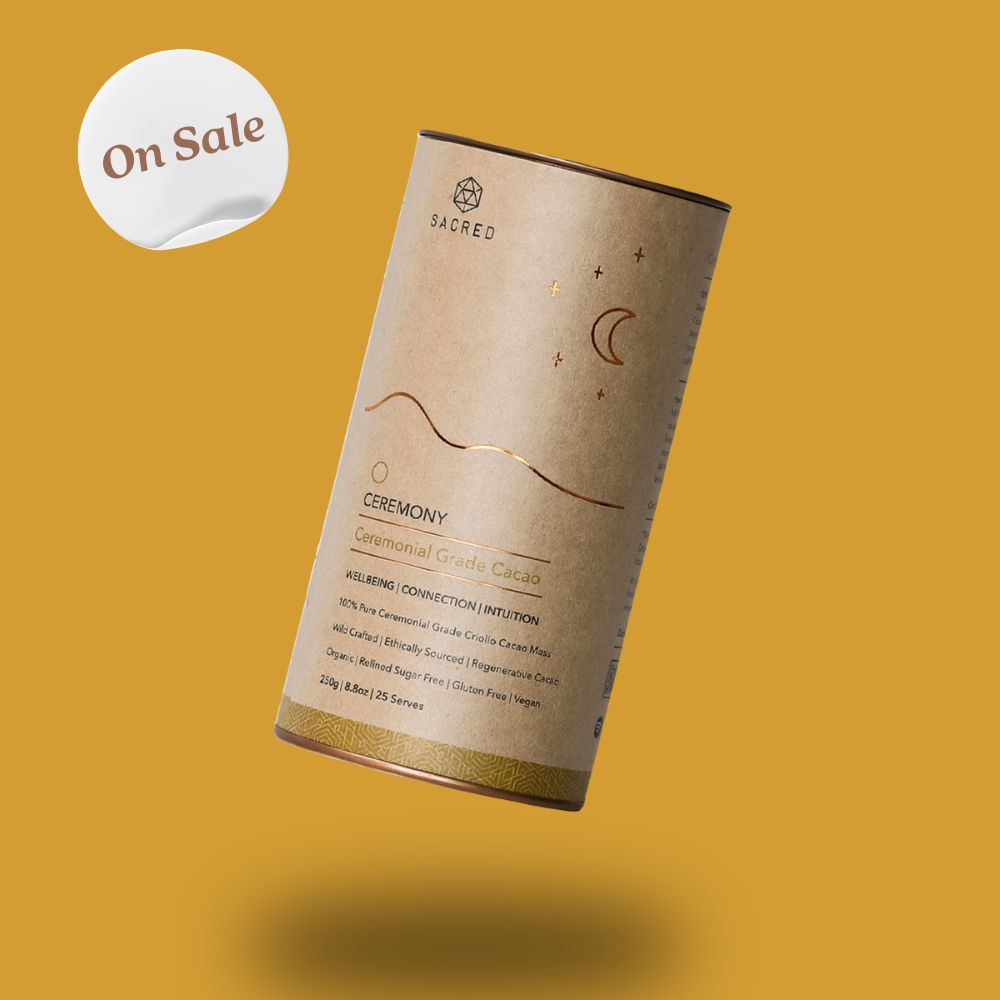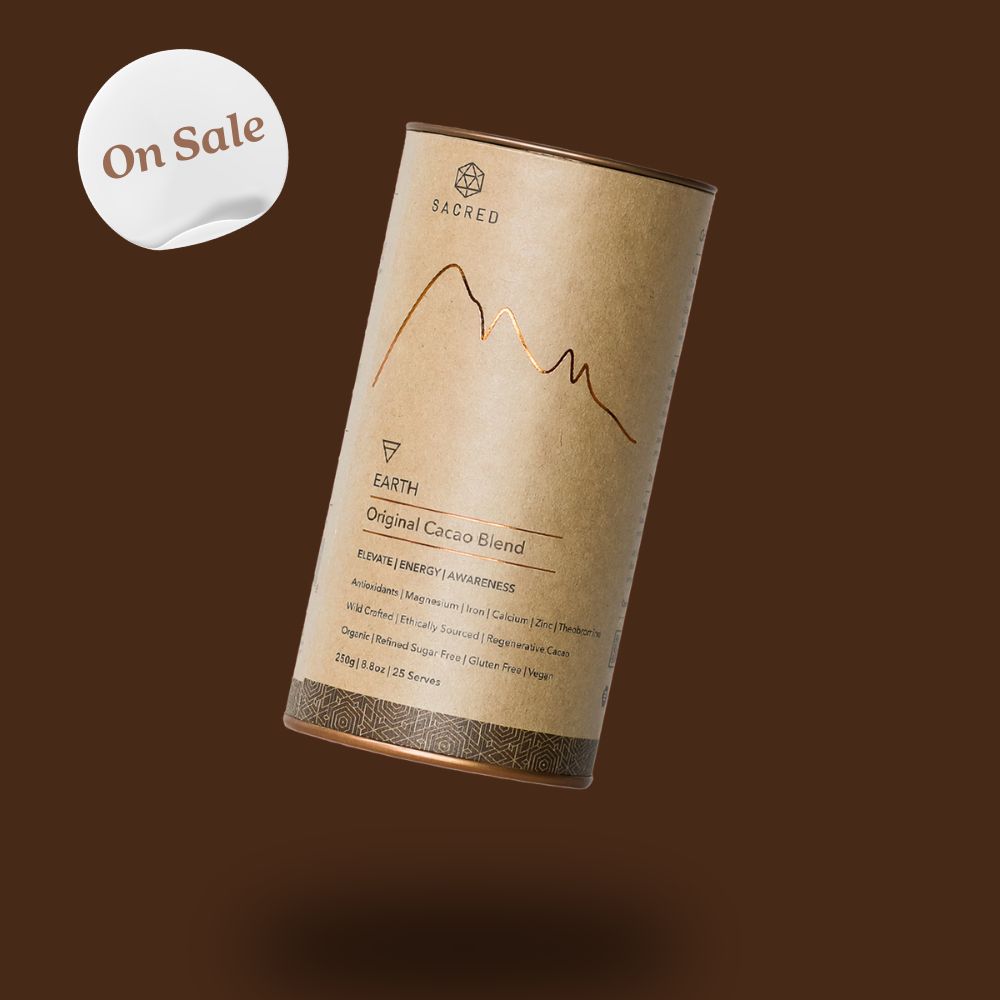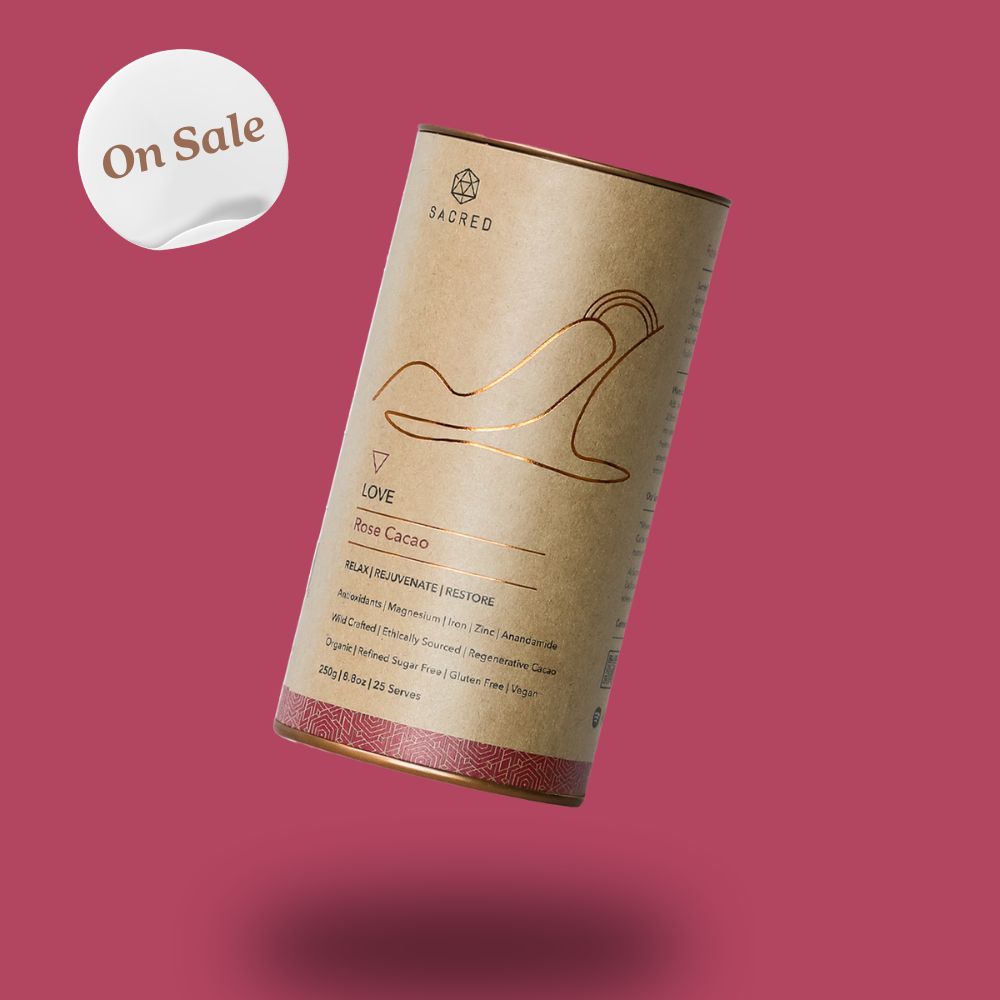
There’s a particular comfort in wrapping your hands around a warm cup of cacao on a cool Melbourne evening. The earthy aroma rises, and before the first sip, you already feel more grounded. For me, cacao has never just been a drink — it’s been a companion in ceremony, a gentle energiser before writing sessions, and a teacher in slowing down. What surprised me most, when I first began working deeply with it, was how much science backed up what traditional cultures had always known: this humble bean is a genuine nutritional powerhouse.
Why Cacao Deserves Its Superfood Status?
Ancient Roots Of Cacao As “Food Of The Gods”
The Mayans and Aztecs weren’t exaggerating when they called cacao the food of the gods. They drank it in thick, bitter brews during rituals, battles, and community gatherings. It wasn’t sweetened or diluted the way most people know chocolate today. Instead, it was revered for strength, focus, and vitality.
I remember sitting in a Guatemalan village years ago, in a simple clay hut, sharing cacao with elders who still prepared it in the old way. They spoke about it not as a treat, but as a plant ally. That experience shifted how I thought about nutrition — because here was a food tied not just to pleasure, but to resilience, longevity, and spiritual well-being.
Modern Science Confirms Cacao’s Nutritional Benefits
Fast forward to today, and researchers now confirm much of what those cultures lived by. Cacao is richer in flavonoids — a group of antioxidants — than blueberries, green tea, or even acai. These aren’t just fancy compounds for textbooks; they’re molecules that support circulation, protect cells, and calm inflammation in the body.
Think of it this way: when you eat blueberries, you’re getting a good hit of antioxidants. But gram for gram, raw cacao can deliver several times more. That’s why nutritionists often put it at the top of the “superfood” list.
In my own life, swapping an afternoon coffee for a small cup of cacao has made a noticeable difference. Instead of the jittery spike I’d get from espresso, cacao’s natural theobromine provides a smoother lift — enough to sharpen my focus without crashing later.
Cacao Nutritional Benefits At A Glance
Cacao isn’t just a comfort drink — it’s packed with nutrients that keep the body ticking over. When I first learned about its composition, I realised why a simple cup could leave me feeling both energised and nourished. It’s not just psychological; there’s real biochemistry at play.
The Vitamins And Minerals Packed In Every Bean
Cacao carries a rich profile of essential minerals, the kind many Australians fall short on in a standard diet. Magnesium is the standout — it’s vital for over 300 biochemical processes, including muscle function and nervous system support. When I started including cacao regularly, I noticed fewer nighttime cramps after long bushwalks in the Dandenongs.
Iron is another key player, crucial for red blood cell production. Pairing cacao with vitamin C-rich fruit (like a slice of orange or some strawberries) can help the body absorb iron more effectively — a trick I often suggest in ceremony circles. Potassium supports heart rhythm, while zinc underpins immune resilience, something particularly useful during Melbourne’s cooler months when colds and flu tend to circulate.
To make the science clear, here’s a simple table of the major nutrients:
|
Nutrient |
Role in the Body |
Example of Everyday Impact |
|
Magnesium |
Supports nerve, muscle, and heart function |
Reduced cramps, steadier energy |
|
Iron |
Produces haemoglobin in red blood cells |
Improved energy and less fatigue |
|
Potassium |
Regulates heart rhythm and fluid balance |
Better hydration and circulation |
|
Zinc |
Boosts the immune system and wound healing |
Faster recovery from minor colds or cuts |
|
Phosphorus & Manganese |
Bone strength and metabolic support |
Stronger bones and better nutrient absorption |
Unique Compounds Behind Cacao’s Power
Beyond vitamins and minerals, cacao carries a cocktail of natural compounds that explain its wide-ranging benefits.
- Theobromine and Caffeine: Theobromine is cacao’s primary stimulant. It’s gentler than caffeine, providing a steady lift in alertness. When I replaced my morning coffee with cacao, I noticed my hands stopped shaking during yoga practice — a subtle but powerful difference.
- Phenylethylamine (PEA) and Anandamide: Often called the “love molecules,” these compounds influence mood by stimulating dopamine and other neurotransmitters. This isn’t a gimmick. I’ve watched people in ceremony move from stress and chatter to a place of ease and joy within half an hour of drinking cacao.
- Fibre and Peptides: The fibre aids digestion and supports gut microbiome health, while peptides show antimicrobial and anti-inflammatory activity. That combination makes cacao not just a treat but a functional food that can support long-term wellness.
Taken together, these nutrients and compounds explain why cacao has been both revered and scientifically validated as a nutritional powerhouse.

Cacao’s Antioxidant And Anti-Inflammatory Effects
When I first started drinking cacao regularly, I wasn’t just looking for energy — I was curious about its deeper effects on the body. Over time, I noticed my recovery after long hikes or late nights was smoother. That wasn’t just a chance. Cacao’s antioxidants were quietly working behind the scenes.
Flavanols As Natural Defenders Against Disease
Flavanols, a group of plant compounds abundant in cacao, are powerful antioxidants. They help neutralise free radicals — unstable molecules that can damage cells and speed up ageing. Think of free radicals as rust forming on iron; left unchecked, they gradually wear things down. Antioxidants are like the protective oil that stops the rust.
Cacao is especially rich in epicatechin and catechin, which have been linked to improved circulation, lower inflammation, and reduced oxidative stress. Research consistently places cacao above other so-called “superfoods” such as blueberries and green tea when it comes to antioxidant density.
Back when I was guiding ceremonies in Byron Bay, one participant shared how switching from daily processed chocolate to raw cacao left her feeling less sluggish and less prone to afternoon energy dips. While anecdotal, it echoes what studies show — the antioxidants in cacao support cellular resilience and overall vitality.
How Cacao Supports Long-Term Wellness?
Oxidative stress and inflammation are at the root of many chronic conditions, from cardiovascular disease to neurodegenerative disorders. Regular inclusion of flavanol-rich cacao can help cut this risk significantly.
For instance, by reducing inflammatory markers in the body, cacao helps create a buffer against conditions like arthritis and even some cancers. This doesn’t mean cacao is a magic bullet — but as part of a balanced diet, it strengthens the body’s defence systems.
Here’s a simple way to visualise it:
- Short-term effects: Improved blood flow, sharper focus, calmer mood.
- Medium-term effects: Better recovery from exercise, steadier energy levels, improved skin resilience.
- Long-term effects: Reduced risk of heart disease, diabetes, and cognitive decline.
Living in Victoria, where winter can feel endless, I’ve found cacao particularly supportive. The anti-inflammatory properties seem to ease the aches and stiffness that colder weather can stir up, especially after long sessions of sitting and writing.
Cacao And Heart Health Benefits
The heart is often called the “seat of the soul” in ceremony, and interestingly, it’s also one of the organs cacao most directly supports. Science now confirms what traditional cultures intuited: cacao nurtures the physical and emotional heart alike.
Blood Pressure, Circulation, And Vascular Function
Flavanol-rich cacao encourages the body to produce nitric oxide, a compound that relaxes blood vessels and improves blood flow. This simple mechanism has wide-reaching effects — steadier blood pressure, better oxygen delivery, and reduced strain on the heart.
I recall a doctor who attended a cacao gathering in Melbourne’s inner north. She was fascinated by the research showing that just 200 mg of cocoa flavanols daily — the amount recognised by the European Food Safety Authority — can help maintain vascular elasticity. For her, it was a rare example of traditional food wisdom aligning with clinical evidence.
A friend of mine with mild hypertension swapped his nightly dessert for a small piece of high-cacao dark chocolate. Over a few months, his blood pressure readings stabilised. While he still relied on lifestyle changes and regular medical care, cacao played a role in tipping the balance.
Cholesterol And Platelet Support
Cacao also influences lipid metabolism. Studies suggest it can increase HDL (“good”) cholesterol while lowering LDL (“bad”) cholesterol and triglycerides. Together, these shifts reduce the risk of arterial plaque build-up.
There’s also evidence of cacao’s anti-platelet activity, which means it can reduce the tendency of blood to clot excessively. This is particularly valuable in lowering cardiovascular risk without the heavy side effects often associated with pharmaceutical blood thinners.
Here’s a quick checklist of cacao’s cardiovascular support:
- Improves blood flow to the heart and brain
- Supports normal blood pressure
- Increases HDL (good cholesterol)
- Lowers LDL (bad cholesterol) and triglycerides
- Reduces platelet aggregation (clumping)
These effects don’t happen overnight, but with regular, moderate consumption, cacao becomes a quiet ally for the heart. In my own body, I notice it most after movement. A small cup of cacao before cycling along the Yarra seems to enhance stamina, likely thanks to improved circulation.
Cacao For Brain Function And Mood Enhancement

When I first began offering cacao ceremonies in Melbourne, I was struck by how quickly people shifted once they drank it. Shoulders softened, laughter bubbled up, and conversations took on more depth. While part of this is the ritual itself, there’s no denying that cacao’s natural chemistry plays a starring role.
Mood-Boosting Compounds For Bliss And Motivation
Cacao contains phenylethylamine (PEA) and anandamide, both often called “bliss molecules.” These compounds help the brain release dopamine and serotonin — neurotransmitters linked with pleasure, motivation, and calm.
I’ve seen it in practice: someone arrives at a ceremony weighed down by stress from a long work week. Within half an hour of sipping cacao, their face lightens, their voice lifts, and they’re more open to connection. It’s not a placebo; it’s biochemistry at work.
There’s also the endorphin effect. Much like the “runner’s high,” cacao can spark the release of natural opioids that dull pain and heighten mood. For many, this translates into a warm, heart-opening sensation often described as a gentle “chocolate high.”
Cognitive Support And Neuroprotection
Beyond mood, cacao sharpens the mind. The combination of theobromine and a touch of caffeine boosts alertness and focus without the jitteriness many experience with coffee. I often swap my morning flat white for a cup of cacao when I need steady concentration to write — the clarity lasts longer and feels cleaner.
Research shows flavanols in cacao may also protect the brain from age-related decline. By improving blood flow to the brain, they support memory, learning, and even reduce risk factors for dementia and stroke. A study I once shared with a local meditation group showed that older adults drinking flavanol-rich cocoa improved on memory tests within just a few weeks.
Stress And Anxiety Relief From Natural Compounds
Interestingly, cacao can energise and relax at the same time. It's theobromine content lifts energy, while compounds like anandamide promote calm focus. In community circles, I’ve seen this dual effect ease anxiety — people feel more present without being overstimulated.
Living in Melbourne’s fast-paced environment, where work deadlines often collide with city traffic and crowded trams, having a natural support for mood and focus is invaluable. A small daily ritual with cacao can act as a buffer against stress, giving both mind and body room to reset.
Cacao And Metabolic Health
Many people are surprised to learn that cacao, often associated with indulgent sweets, can actually support metabolic health. When used in its pure form and in moderation, it offers tools for managing blood sugar and supporting a healthy weight — something I’ve seen first-hand in community practice.
Supporting Blood Sugar Balance And Insulin Sensitivity
The polyphenols in cacao help the body use insulin more effectively. This means glucose moves more efficiently from the blood into cells, reducing the risk of insulin resistance — a major factor in type 2 diabetes.
I once worked with a participant in a wellness program in Fitzroy who swapped her afternoon biscuit-and-coffee habit for a small cacao drink. Over a few months, her energy crashes became less severe, and her GP noted an improvement in her blood sugar readings. While cacao wasn’t the only factor, it played a role in curbing spikes caused by refined snacks.
Researchers suggest that dark, flavanol-rich cacao supports insulin sensitivity, which makes it an ally in blood sugar regulation. Of course, this works best when paired with a balanced lifestyle — plenty of movement, whole foods, and mindful eating.
Fibre And Weight Management Support
Cacao is also a natural source of dietary fibre. This fibre slows digestion, helps regulate appetite, and creates a sense of fullness. For those of us trying to avoid mindless snacking, a warm cup of cacao can be the difference between reaching for another handful of chips and feeling satisfied.
Here’s a quick look at how cacao supports weight management:
- Promotes satiety: Fibre keeps you fuller for longer.
- Balances energy: Prevents the highs and lows of sugary snacks.
- Anti-obesity effects: Some studies link flavanols to reduced fat storage and improved metabolism.
- Encourages mindful eating: Ritual preparation of cacao slows you down, reducing overeating.
I’ve found this particularly helpful during winter in Victoria, when it’s easy to reach for heavy comfort foods. A small portion of cacao can satisfy the craving for something rich while offering genuine nourishment.
Cacao And Digestive Health
When people think of cacao, they don’t usually connect it with the gut. Yet, behind the comforting flavour lies a powerful prebiotic effect that directly supports digestive balance. I’ve seen this in my own body: regular cacao not only improved my energy but left me feeling lighter and more comfortable after meals.
Feeding Beneficial Gut Bacteria
The polyphenols in cacao act as fuel for beneficial gut microbes such as Lactobacillus and Bifidobacterium. These bacteria thrive when fed cacao compounds, and in turn, they release metabolites that calm inflammation and support overall gut health.
I remember sharing cacao with a naturopath friend in Melbourne who specialises in digestive issues. She explained how cacao works a bit like compost for the microbiome — feeding the “good bugs” so they flourish and keep harmful bacteria in check.
Here’s a simple comparison table of cacao’s gut-supportive effects:
|
Compound in Cacao |
Effect on Microbiome |
Result for the Body |
|
Polyphenols |
Promote growth of beneficial bacteria |
Stronger gut barrier, reduced inflammation |
|
Fibre |
Provides bulk and food for microbes |
Better digestion and regularity |
|
Flavanols |
Encourage production of short-chain fatty acids |
Improved mood and energy via gut-brain link |
Gut-Brain Connection And Mood Regulation
The gut is often called the “second brain” because of its influence on mood. By supporting beneficial bacteria, cacao indirectly enhances serotonin production and reduces inflammatory signals linked to anxiety and depression.
In practice, this means a cup of cacao doesn’t just soothe the stomach — it can lift the spirit. During one community circle in Victoria, a participant described how her digestion felt calmer after introducing daily cacao, and she noticed a subtle but real improvement in mood stability. That experience mirrors emerging studies showing how cacao shapes the gut-brain connection.
Living in Australia, where stress and long commutes are common for many, digestive health often takes a hit. Including cacao as part of a balanced, whole-food diet can be a simple way to protect both the belly and the mind.
Cacao As A Path To Holistic Nutrition And Overall Wellness
Working with cacao over the past decade, I’ve come to see it as more than just a superfood. Yes, the science is compelling — antioxidants, minerals, flavonoids. But in daily life, its true magic lies in how it weaves together body, mind, and spirit. Cacao invites a slower, more mindful rhythm that benefits far more than just the palate.
Daily Rituals With Cacao For Energy And Balance
Many of us in Melbourne juggle busy schedules, commuting across the city or managing the ebb and flow of remote work. It’s tempting to reach for quick fixes — another coffee, an energy drink, a sugary snack. Yet cacao offers a different pathway: steady, sustainable energy without the crash.
Here are some practical ways I’ve seen cacao integrated into local routines:
- Morning Focus: A small cacao drink before yoga or meditation enhances clarity without overstimulation.
- Midday Reset: Swapping out a second coffee for cacao can smooth energy levels through the afternoon slump.
- Winter Warmer: During Victoria’s colder months, a rich cup of cacao makes for a nourishing alternative to tea or coffee, supporting circulation and mood.
- Creative Companion: Writers, artists, and musicians often find cacao helps sustain focus during long creative sessions.
One participant in a Brunswick community circle shared how she began replacing her morning latte with cacao during the cooler months. Not only did she notice fewer jitters, but she also felt more connected to her body throughout the day — a subtle but meaningful shift.
A Balanced View On Cacao’s Role In Wellness
Of course, cacao isn’t a cure-all. It needs to be approached with moderation and respect. Overindulging — especially with sweetened chocolate products — can easily tip the scales, leading to more sugar and calories than the body needs.
From my experience, the most balanced approach is treating cacao as both food and ritual:
- Choose minimally processed forms (raw cacao, nibs, or pure paste).
- Keep portions modest — enough to feel uplifted, not overstimulated.
- Pair it with whole foods (fruits, nuts, seeds) rather than processed sugars.
- Honour its roots — remembering that cacao has been held sacred for thousands of years.
In this way, cacao becomes a partner in wellness. It nourishes the body with minerals and antioxidants, supports the heart and mind through flavonoids and mood enhancers, and offers a daily moment to pause, breathe, and reconnect.
As I often remind people in ceremony: cacao isn’t just about what it gives us , it’s about the space it creates for us to listen to ourselves more deeply.
Cacao has walked a long path from sacred Mayan brews to modern nutritional research and through it all, it has kept its reputation as both food and medicine. What makes it so powerful isn’t just the magnesium, flavonoids, or antioxidants. It’s the way those elements interact to support heart health, brain function, mood, skin, digestion, and overall vitality.
From my own journey, I’ve seen how cacao changes the way people relate to nourishment. Whether shared in a ceremony in Brunswick, sipped as a warming ritual in a chilly Melbourne winter, or used to replace an afternoon coffee, it offers more than nutrients. It offers presence.
Handled with respect minimally processed, consumed in moderation, and held with awareness of its cultural roots cacao becomes more than a superfood. It becomes a daily ally for holistic wellness.
















